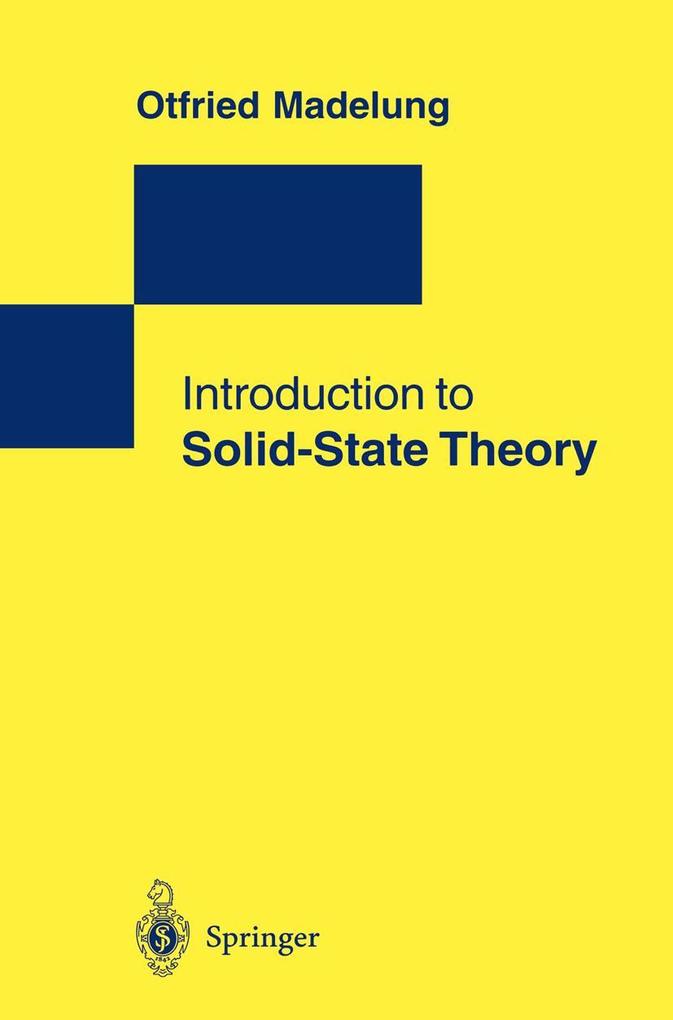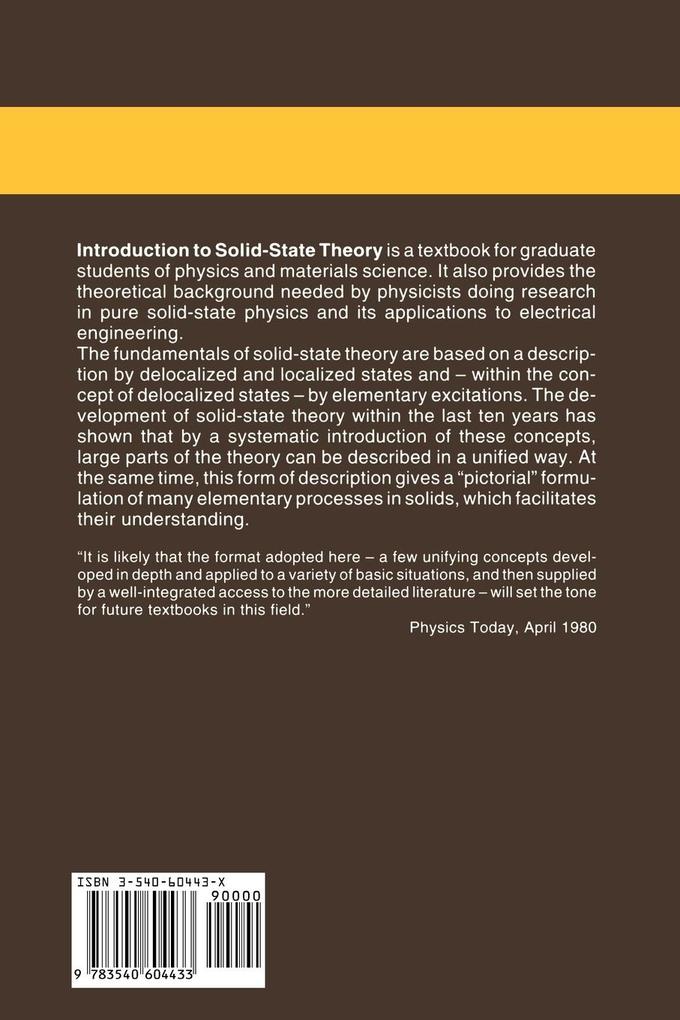Introduction to Solid-State Theory is a textbook for graduate students of physics and materials science. It also provides the theoretical background needed by physicists doing research in pure solid-state physics and its applications to electrical engineering. The fundamentals of solid-state theory are based on a description by delocalized and localized states and - within the concept of delocalized states - by elementary excitations. The development of solid-state theory within the last ten years has shown that by a systematic introduction of these concepts, large parts of the theory can be described in a unified way. This form of description gives a "pictorial" formulation of many elementary processes in solids, which facilitates their understanding.
Inhaltsverzeichnis
1. Fundamentals. - 1. 1 Introduction. - 1. 2 The Basic Hamiltonian. - 1. 3 The Hartree-Fock Approximation. - 2. The One-Electron Approximation. - 2. 1 The Electron Gas Without Interaction. - 2. 2 Electrons in a Periodic Potential. - 2. 2. 3 The Schrödinger Equation for Electrons in a Periodic Potential. - 2. 2. 5 Consequences of Translational Invariance. - 2. 2. 7 Wannier Functions, LCAO Approximation. - 3. Elementary Excitations. - 3. 1 The Interacting Electron Gas: Quasi-Electrons and Plasmons. - 3. 2 Electron-Hole Interaction in Semiconductors and Insulators: Excitons. - 3. 3 Ion-Ion Interaction: Phonons. - 3. 4 Spin-Spin Interaction: Magnons. - 4. Electron-Phonon Interaction: Transport Phenomena. - 4. 1 The Interaction Processes. - 4. 2 The Boltzmann Equation. - 4. 2 Boltzmann Equations for the Electron and Phonon Systems. - 4. 3 Formal Transport Theory. - 4. 4 Transport in Metals and Semiconductors. - 5. Electron-Electron Interaction by Exchange of Virtual Phonons: Superconductivity. - 5. 1 Introduction. - 5. 2 Cooper Pairs. - 5. 3 The Ground State of the Superconducting Electron Gas. - 5. 4 Excited States. - 5. 5 Comparison with Experiment. - 5. 6 Thc Meissner-Ochsenfeld Effect. - 5. 7 Further Theoretical Concepts. - 6. Interaction with Photons: Optics. - 6. 1 Fundamentals. - 6. 2 Electron-Photon Interaction. - 6. 3 Phonon-Photon Interaction. - 7. Phonon-Phonon Interaction: Thermal Properties. - 7. 1 Introduction. - 7. 2 Frequency Shift and Lifetime of Phonons. - 7. 3 The Anharmonic Contributions to the Free Energy, Thermal Expansion. - 7. 4 The Thermal Conductivity of the Lattice. - 8. Local Description of Solid-State Properties. - 8. 1 Localized and Extended States. - 8. 2 The Chemical Bond. - 8. 3 Local Versus Nonlocal Description in Unperturbed Lattices. - 9. Localized States. - 9. 1 Point Imperfections. - 9. 2 Localized States andElementary Excitations at Surfaces. - 10. Disorder. - 10. 1 Localized States in Disordered Lattices. - 10. 2 Transport in Disordered Lattices. - 10. 2 The Hopping Probability. - Appendix: The Occupation Number Representation. - Problems to Chapters 1 9.











